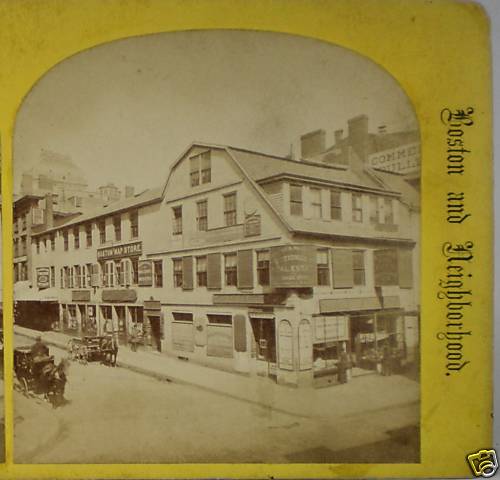
Marty Weil of the The Ephemera Blog and John Ptak of The Science Bookstore have put together a useful rubric for measuring "ephemeralness". Marty says
"WP Ephemera Scale standardizes the relative indicators of what makes something ephemera into six principal categories and grades them on a scale of 5 through 30, least ephemeral to most. The indicators approximate the printed item's importance, distribution, susceptibility for being saved, durability, age, and purpose."
They then break down 5 categories, and assign a score (1-5) to the various attributes. So, 5 would be the lowest total score possible, and would be the most ephemeral item. A 30 would be the highest, least ephemeral thing. These include:
(A) Place of origin/population target. (Approximation of how many of these printed items were made.) What sort of population was it printed for? (5) town (4) region (3) city (2) state (1) countryOne thing that could be very difficult to measure is (A) the quantity of an item printed. The target audience is a good, but rough guide. I can't think of anything as effective, certainly nothing more effective. I don't like that the evaluator needs to draw conjectures and extrapolate, but I think this may be as good as it gets.
(B) Amount of usage/intended amount of use of the printed item. (5) Single, one-time usage (implying it was collected after use/thrown away) (4) multiple (3) monthly (2) yearly (1) lifetime(B) also perhaps needs more definition. For instance, how do I score something that was not expected to last very long, but expected to be used up over a few months? Is that multiple or monthly? Or is something "monthly" if I use it once a month?
(C) Purpose of the printed item. (5) Very highly restricted (1) very widely employed, multi-purpose
I think we need some things defined. Like (C), what is "highly restricted" intended use vs. multi-purpose? Like a matchbook- usually limited to the life of 20 matches (on a windy night, that could be very short), or is it multi-purpose? Are there degrees in the middle?
(D) Savability--reasons why the item might have been saved. (5) Very low (reason to save it, like an unused bus transfer, laundry ticket; OR, the item was collected after use; (4) Low (intended for a single use but was not necessarily collected once used (like a movie stub); (3) Medium (2) High (1) very high reason to save (like wedding photos, military troop photos, baby pictures, that sort)
(E) Medium (the physical object itself and the stuff it is made of, meaning that if it was flimsy, toilet-paper-like material it would just not stand the test of time better than, say, a vellum document. It was made to be dispensable.) (5) Flimsy, potentially volatile material; (4) newsprint (3) cheap paper but better than newsprint (2) strong, good book-paper (1) very strong (vellum, thick, cover-stock paper
(F) Age. (5) New (4) Newish to 5 years old (3) 6-25 years old (2) 26-100 years old (1) 200+ years old
I believe (F) is supposed to score the other direction, but you get the idea. So, I want to put the WP Scale to test and see what there is to see.

This scale is really wonderful and it is certainly evident a lot of thought and consideration has gone into it. I think it will be a helpful tool, especially to people who do not deal much with ephemera, to understand what makes a piece special. It could also be very helpful to collection managers and archivists to help quantify the scarcity of ephemera in museum and library/archive collections. Another thing I like, is that to use the scale, you have to have the object in your hands. This cannot be done by photos, or arbitrarily they way many booksellers grade their books.
OK, so let's apply the scale to a stereoview I just bought this last week or two. It is an image of the Old Corner Bookstore in Boston.
A) I've seen this stereoview a few times before, and know this was an oft-printed series. I would rate it a 3. I think 3 is too high, perhaps 2 should be for states and large cities. Afterall, the population of Boston in the 1870s was bigger than some of the more rural states.
B) Amount of usage. I think a 2, yearly. I don't think stereoview publishers thought these would last a lifetime, but were intended to last a long time.
C) 1. Stereoviews were meant to be used many, many times in the home, or at a reading room, school, etc.
D) 2 for savability.
E) 1 for medium. Stereoviews were often printed on very heavy cardstock, but quality varies. My example is on one of the nicer stocks.
F) 4. The stereoview has a handwritten date on the back of Nov. 1872, in period brown dip-pen ink. It was black ink, but it turned a very dark brown after 130+ years of oxidation. The date also fits the style of stereoview.
So, the WP Ephemera Score for my stereoview would be: 13. For this particular stereoview, I think this is a good score and reflects the ephemerality of this item. I've told you before, I'm not above making up words.

No comments:
Post a Comment